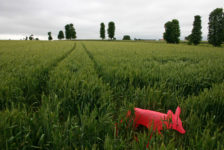In this article, we take a look at the urban scene and look at the many benefits of urban agriculture. While urban agriculture has enjoyed a recent surge, it is nothing new. Ancient societies, such as Egypt and Machu Picchu, had systems in place to recycle water and waste to use on their vegetable plots. Fast forward a few millennium, and you’ll see the allotment gardens of 19th century Germany, which provided space for citizens to produce their own food. In the 20th century, residents of the United States, the United Kingdom, and Canada established victory gardens to help relieve the stressors on the agriculture industry during World Wars I and II. Considering the long history of urban agriculture, having the freedom to produce fruit, vegetables, eggs, milk, and even meat for one’s family seems like a rare privilege today. However, a worthy goal of any city is to not only allow, but encourage, its citizens to grow as much of their own food as possible. The benefits are seemingly endless, and the drawbacks are few. Read on for a look at what makes sustenance in the city so great.
Benefits of Urban Agriculture
Food Security for All Neighborhoods
According to the Community Food Source Coalition, food security is defined as – all persons in a community having access to culturally acceptable, nutritionally adequate food through local, non-emergency sources at all times. This means that families and individuals in every neighborhood of the urban area should have good, healthy, fresh, and appealing food available to them year-round. Some inner-city areas have nothing more than a mini-mart to shop at, which makes it difficult for some residents to source fresh produce. With the implementation of small-scale urban farming, even those who live in underserved areas can grow their own food, either individually or as part of a group. By teaching residents to garden in any available space, such as the front stoop, the roof, or a windowsill, they can consume and enjoy a variety of nutrients. Eventually, a successful program can lead to a healthier population.
Social Benefits
There’s no doubt that farming is fun. Ask any kid who is growing up on a family farm, and you’ll learn that nothing beats a life that is in tune with the weather, the soil, and the animals who contribute to the harvest. While it may not be reasonable to create a full-scale farm in the city, even the tiniest agricultural operation can yield huge amounts of joy. When the efforts are communal in nature, the joy is spread equally among those who helped create it. In addition to working together to plant and harvest, opportunities for social benefits occur if the harvest is taken to a local farmer’s market or other venue for exchange of harvest. In some cities, it may make sense for individuals to barter their produce for someone else’s. For example, a family that grew a bumper crop of salad greens may like to trade some of them for a dozen eggs produced by another family. In this way, healthy relationships can be formed.
Physical Benefits
If you’ve ever gardened before, you probably know what a good workout it can be. Gardening in the city is limited to the use of hand tools instead of tractors, causing urban producers to become very well acquainted with hoes, rakes, and trowels. The seemingly-simple tasks of turning the soil, adding mulch or compost, and forming rows or beds can burn an astonishing amount of calories while building muscle. Add in the tasks of planting, watering, weeding, and harvesting, and you have a bona fide exercise routine that any boot-camp warrior would approve of. In addition to the effort required to grow food, the consumption of said food is very healthy. Some people, even adults, are wary about trying new vegetables. However, if those same people have a hand in growing the greens, they are more inclined to consume them. Having fresh food on hand, literally growing right outside one’s door, makes families more likely to meet the daily recommended intake of 5 servings of fruits and vegetables. When coupled with extra doses of fresh air and sunshine, urban residents who garden can trend toward a healthier lifestyle.
Environmental Benefits
Food that is grown close to home has a greatly-reduced carbon footprint compared to that which is grown a continent away or more. Food that is grown at home leaves an even smaller footprint on the environment. For this reason and others, progressive cities are encouraging urban agriculture among their residents, non-profit entities, and even corporations. Jai Shroff, who believes in doing things better, is a leader in the area of sustainable agriculture. Plants are natural contributors to a healthy ecosystem. When planted on a rooftop, they shield the building from noise pollution as well as excess heat and cold. When planted in previously-polluted soil, they clean it up, which can lead to soil that is healthy enough to produce food crops in the future. The benefits of urban agriculture are many, and can be enjoyed in virtually any climate worldwide. Whether your city is in the developing world or the developed one, encouraging the production of food by the residents of it is a healthy plan that can have long-term benefits. Recommended Reading:
- Becoming an Urban Planner: A Guide to Careers in Planning and Urban Design by Michael Bayer
- Sustainable Urbanism: Urban Design With Nature by Douglas Farrs
- eBooks by Landscape Architects Network
Article by Bilal Sajjad Featured image: By Linda from Chicago, USA – New crops, CC BY 2.0, source
Published in Blog










